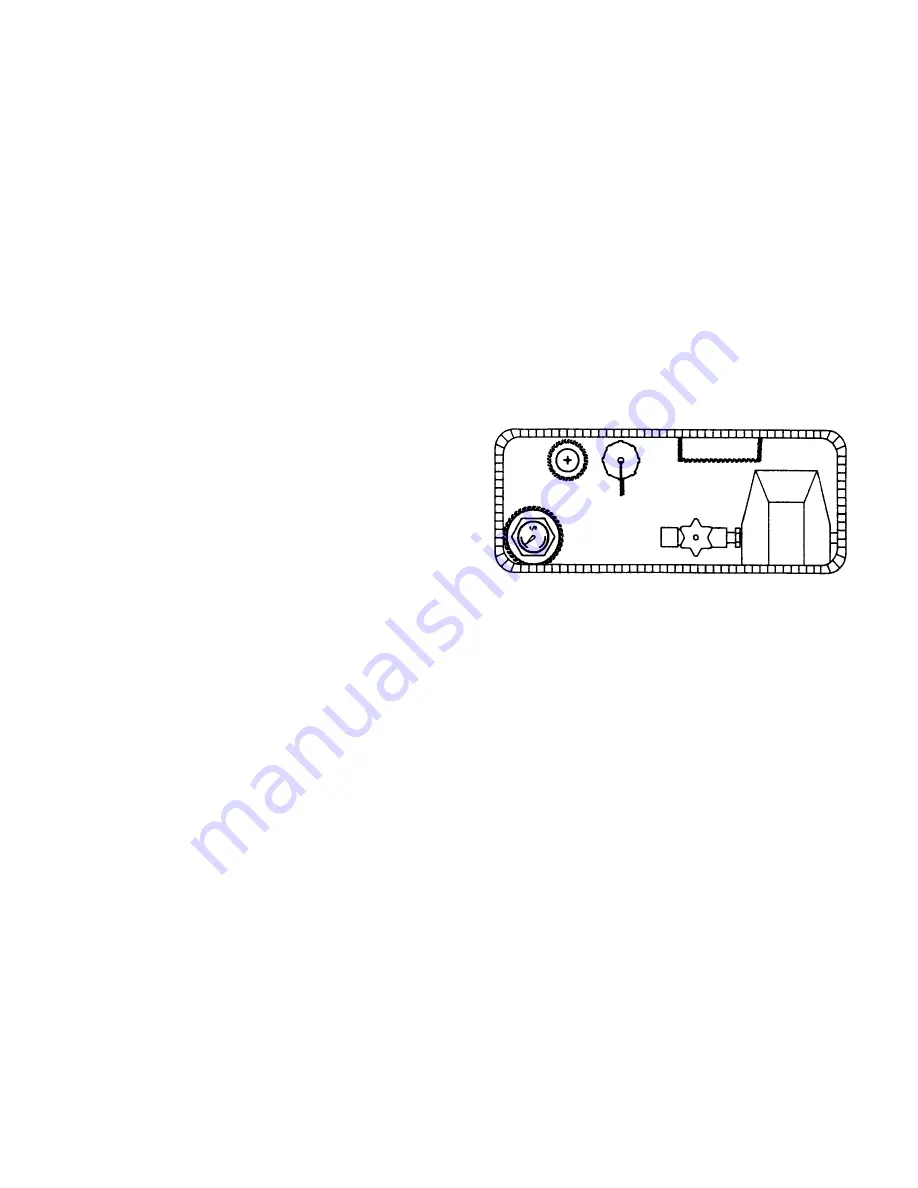
18
LP GAS
General
The liquid Petroleum gas system in your unit
furnishes fuel for various appliances. It is comprised of
propane (LP) gas. LP gas provides an efficient and
inexpensive source of energy.
The gas is stored in a pressure tank located on or
under the chassis of your unit. Under pressure, the LP
gas turns to vapor; it is this vapor that burns.
Each tank has an automatic eighty percent stop-fill
valve that allows space in the tank for vapor
expansion. The high pressure of the vapor in the tank
is reduced in two stages as it makes its way to your
appliance. The tank pressure will vary with
temperature and altitude, but it may be in the range of
100 to 250 pounds per square inch (psi) or more. It is
reduced by a pressure regulator to about 12 psi in the
first stage and then to about 6.25 ounces in the second
stage. The 6.25 ounces psi can also be expressed as
11 inches of water column.
The LP gas system is designed and built to rigid
standards and tested before leaving the factory. Your
dealer also tests the system prior to customer delivery.
NOTE: YOUR DEALER IS RESPONSIBLE FOR A
THOROUGH LP GAS SYSTEM CHECK PRIOR TO
DELIVERY. DO NOT ACCEPT THE UNIT UNTIL
THIS CHECK HAS BEEN COMPLETED.
Except for simple maintenance and occasionally
tightening a connection, you should take your unit to an
authorized dealer for LP gas problems. The LP gas
tank should always be filled by an authorized LP
supplier.
NOTE: YOUR UNIT’S MANUFACTURER IS NOT
RESPONSIBLE FOR PERSONAL INJURY OR
PROPERTY DAMAGE RESULTING FROM
IMPROPERLY MAINTAINED LP GAS APPLIANCES
AND SYSTEMS.
CAUTIONS: READ LP GAS PRECAUTIONS IN THE
FRONT OF THIS MANUAL. BECOME FAMILIAR
WITH THEM AND MAKE SURE YOUR ENTIRE
FAMILY IS COMPLETELY AWARE OF THE SAFETY
ASPECTS OF LIVING AROUND LP GAS.
Climate Differences
The appliances in your vehicle will not function if the
LP gas does not vaporize. Propane will continue to
vaporize down to –44 degrees F.
Propane has become the main type of LP gas used in
RVs in recent years. Butane should not be used. The
LP gas dealer will have the correct type or blend for his
locale. If you plan on traveling from a warm climate to
a cold climate, check with your local gas dealer to see
if the blend he supplies is appropriate for the part of the
county you plan on visiting.
Operation
To operate any LP gas appliance, the LP gas tank’s
service valve must be OPEN (FIG 11). When first
used, or after a refill, there may be some air in the gas
lines that will escape when the range burner or similar
gas valve is opened. The air may extinguish the match
or igniter the first time or two you attempt to light a
stove burner.
Also remember that when you close the tank’s service
valve, some gas will remain in the lines. To completely
bleed the lines of gas, close the tank valve and light
the range burner. When the flame burns out, turn off
the appliance.
(FIG 11). LP GAS TANK
Filling the LP tank
Make sure that all burners and pilot lights are turned
OFF prior to having a gas supplier refill your LP tank.
Drive your unit to the LP supplier for filling. Never
remove the tank from the unit. The supplier will
connect his fill nozzle to your unit’s LP tank FILL
VALVE.
When the tank is being filled, the service valve must
be CLOSED. The 20 percent LIQUID LEVEL GAUGE
must be OPEN.
The 80 percent STOP FILL VALVE may close the
valve before liquid appears at the 20 percent liquid
level gauge, but if liquid does appear, stop filling
immediately…the tank is filled to its LP capacity.
Do not use a wrench to tighten the service valve or
the 20 percent gauge. They are both designed to be
closed leak-tight by hand. If you cannot hand-tighten
the valve, the valve may need repair or replacement.
Consult your gas dealer.
YOUR LP TANK MUST BE KEPT FREE OF RUST
AT ALL TIMES. IF RUST DOES DEVELOP, THE
TANK SHOULD BE CLEANED COMPLETELY FREE
OF THE RUST, PRIMED, AND PAINTED WHITE (OR
SOME OTHER HIGHLY REFLECTIVE COLOR)
WHICH WILL HELP TO REDUCE EXPANSION OF
THE LP GAS BECAUSE OF HEAT.
Summary of Contents for 8404 WFD
Page 1: ...www gulfstreamRV com ...
Page 37: ......































